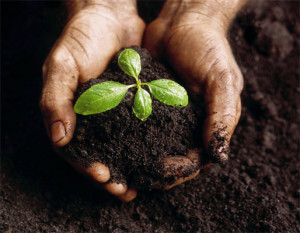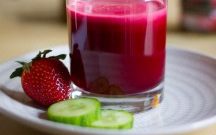 Organic Soil
Organic Soil
Organic gardening begins with the soil. Chemical-free soil means getting creative to control weeds and pests. It also means preserving and cultivating the nutrients within. Plants take carbon from the air and, in simple terms, turn them into carbon-sugars. The sugars pass through the roots into the soil and eventually become the fertile topsoil that your future veggies love. This is, of course, very simplistic version of what happens; however – your plant’s nutritional value is determined by your soil quality. Let’s look at how to preserve your organic topsoil and keep your life chemical-free!
Preserving Soil with Planting
Soil microbes are essential to having nutrient rich soil. Every happy gardener knows that healthy soil means many healthy earthworms are tilling and aerating your soil. Healthy microbes equal the presence of happy earthworms, and that means a happy garden. Composting ensures you always have a constant supply of fresh organic material going into your soil. It also provides a way to recycle your garden waste into a useful byproduct. Composting ensures the health of deeper soil. Nevertheless, very few people pay much attention to the topsoil other than sprinkling some Epsom salt for some natural pest control or fertilizer.
Your Cover Crops
Erosion is a serious problem because of deforestation and the removal of crucial plant life. The trees and other plant life create a web-like root system that holds the topsoil together. Topsoil is the first place that decomposition takes place! Cover crops are crucial for protecting your organic topsoil from washing away or drying out and losing nutrients. Cover Crops help:
- Choke weeds
- Feed microbes
- Avoid soil compaction (and much more)
Mother Earth News has become one of my favorite places for all things homesteading. Their articles break down the science behind their posts – like this very topic. They have suggested the following for excellent cover crops:
- Austrian winter peas • Annual clover • Sunflowers • Cow peas • Kale (Which I have planted and have even harvested in the winter!) • Oilseed radishes (like Daikon radishes) • Turnips
Planting cover crops with other “sister” plants can help benefit the soil and the “sister” crop. “For example, annual clover, growing between rows of sweet corn, will fix nitrogen for the corn.” A little research and you can learn which plants can do double duty! Edible and medicinal cover crops are even better. You may not think of something like Marigolds as a cover crop – but they are! They are also a natural way to control pests. Just because you want to have healthy organic soil doesn’t’ mean your garden has to look like it is filled to the brim with vegetation. Marigolds are pretty, and they help to repel insects and can be planted between rows of taller plants. You can add variety to your garden with cover crops and make it a beautiful landscape. Sunflowers not only can offer you a shady spot to read but also can help you to keep weeds at bay. Add a bench and you can create your personal oasis!
Applications & Resources
- Check out Mother Earth News for great tips and tricks for living sustainably




Amazing Blog. Really enjoyed reading.